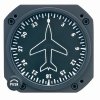jaybee
Cleared for Takeoff
I thought maybe we could all share handy tips, tricks and memory aids we've learned. I'm not talking about stuff like tomato flames that pretty much every body learned unless it was something that made it easier to learn.
Example -
I was taught 5 Ts for instrument; turn, tune.... I was going to list them but still cant remember them to this day, just draw a mental block on it. However, I learned FACTS from a friend and that sticks easily. Frequency, Altitude, Course, Time, Supplemental.
Another recent one -
The questions from the tests where they ask you which AC is for Airmen or something similar. Instead of rote memorization and I never realized before someone said it - the Advisory Circulars are coded to match the FAR; i.e. Part 61 is what we train under, AC 60 is for Airmen.
Example -
I was taught 5 Ts for instrument; turn, tune.... I was going to list them but still cant remember them to this day, just draw a mental block on it. However, I learned FACTS from a friend and that sticks easily. Frequency, Altitude, Course, Time, Supplemental.
Another recent one -
The questions from the tests where they ask you which AC is for Airmen or something similar. Instead of rote memorization and I never realized before someone said it - the Advisory Circulars are coded to match the FAR; i.e. Part 61 is what we train under, AC 60 is for Airmen.

 different versions of the same thing
different versions of the same thing 
